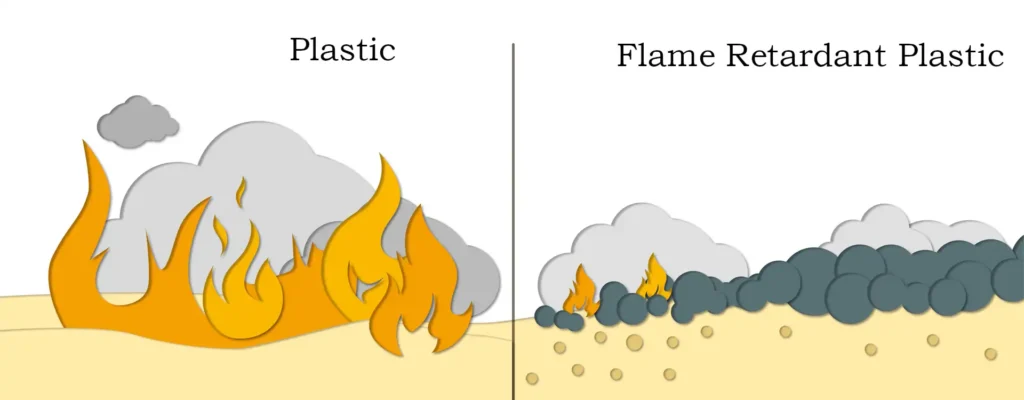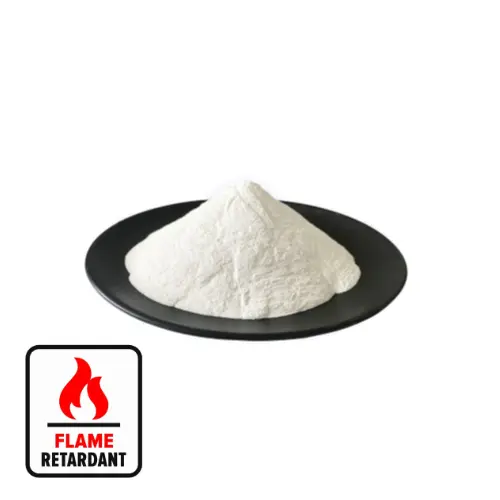The flame retardant effect of metal hydroxides is mainly endothermic decomposition and water release. When added to a polymer with a high filler content, the flame retardant polymer is brought about by a series of physical effects during thermal decomposition by the metal hydroxide: endothermic decomposition releases water and oxides to offset the heat of the polymer, the absorbed heat of the evaporated water, the water vapor formed dilutes the combustible gas, and the high specific heat capacity and carbonization of the filler interrupt or delay the combustion of the polymer.
The flame retardant mechanism of the two is similar. The thermal decomposition process of magnesium hydroxide and aluminum hydroxide is: the gaseous water produced by thermal decomposition can cover the flame, discharge oxygen, dilute the combustible gas, and form an insulating layer on the plastic surface in contact with the flame to prevent the flow of combustible gas and the spread of flame, similar to the carbonization of phosphorus flame retardants. The decomposition products of these two flame retardants are non-toxic substances and will produce mineral phases, especially magnesium hydroxide, which has a stronger neutralization ability with acid than aluminum hydroxide and can neutralize the plastic combustion process faster. Acidic and corrosive gases (SO2, NO2, CO2, etc.) are produced.

Thermal reaction process:
2AI(OH) 3→AI2O3 + 3H2O
Decomposing 1g of aluminum hydroxide consumes 1.051J of heat.
Mg (OH)2→MgO + H2O
Decomposing 1g of magnesium hydroxide consumes 1.316J of heat.
The decomposition energy of magnesium hydroxide (1.316kJ/g) is higher than that of aluminum hydroxide (1.051kJ/g), and the heat capacity is also 17% higher, which helps to improve the flame retardant efficiency.
The smoke emission of Magnesium Hydroxide is lower, and the smoke density of Magnesium Hydroxide is lower than that of aluminum hydroxide.
The smoke emission of flame retardant fuel containing aluminum hydroxide is higher than that of magnesium hydroxide mixture, and the smoke suppression is not as good as magnesium hydroxide.
Magnesium hydroxide has a strong carbonization effect and a large carbonization amount, which improves the flame retardant efficiency and reduces the smoke generation.

The thermal decomposition temperature of magnesium hydroxide is 330°C, and the thermal decomposition temperature of aluminum hydroxide is 210°C, which is 100°C higher than aluminum hydroxide. Therefore, plastics with magnesium hydroxide flame retardant can withstand higher processing temperatures, because increasing the processing temperature during plastic processing is conducive to speeding up extrusion speed and shortening molding time.
Magnesium hydroxide and aluminum hydroxide are two different flame retardants. In addition to having similar impacts on the environment, these two flame retardants have obvious contrasts in thermal reaction, decomposition temperature, flame retardant ability and other aspects. The performance of magnesium hydroxide flame retardant is better than that of aluminum hydroxide flame retardant.

